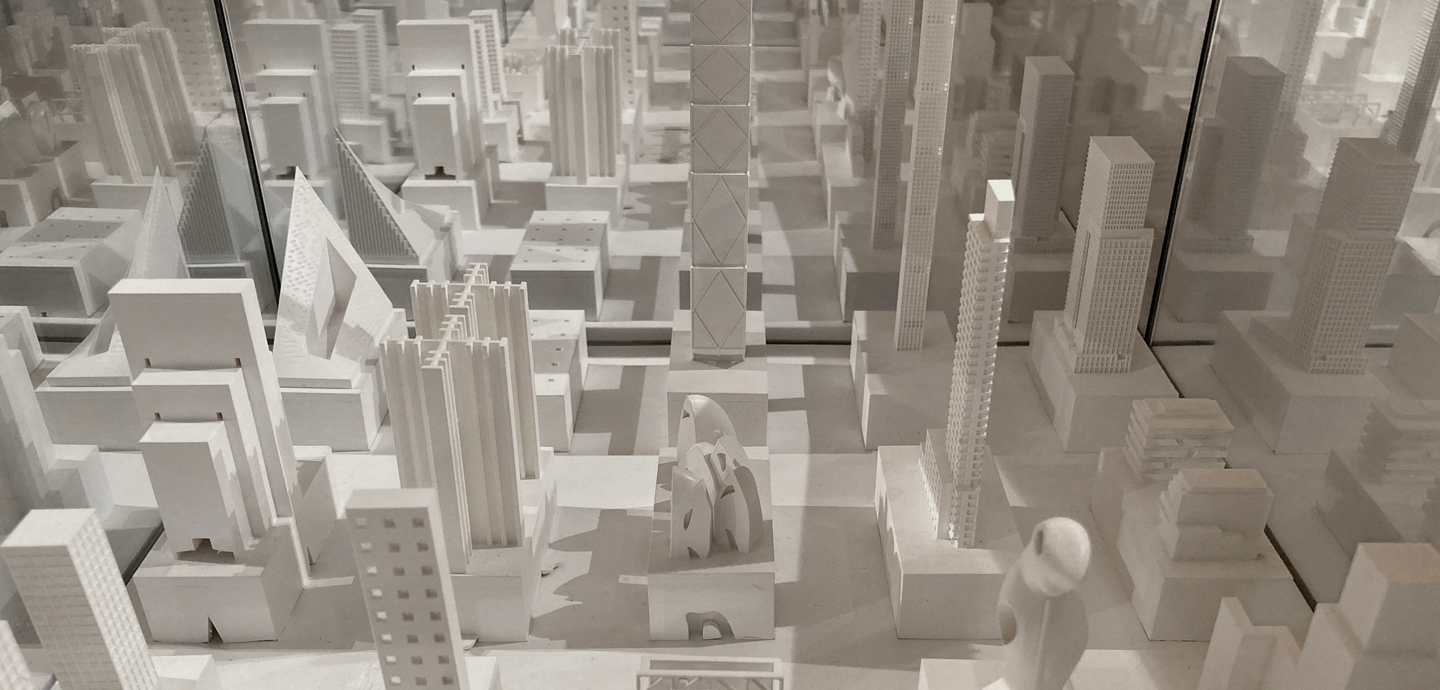Stanley Cho, Elisa Iturbe, Alican Taylan: Confronting Carbon Form

image / provided
Exhibition Description
A new spatial order was born in the fossil fuel age: new building typologies and urban archetypes emerged to meet the demands of a new economy, while unprecedented mobility fundamentally changed human perception of space. From the steam engine onward, these architectural and urban configurations—which could be referred to as carbon form—have enmeshed the cultural, economic, and political aspects of social life within an energy-intensive network of space and form. These are the spatial roots of the climate crisis and remain largely understudied and unchallenged.
This exhibition offers, for the first time, a working vocabulary of carbon form, identifying its spatial and formal characteristics while also locating its historical roots and cultural underpinnings. Central to this work is the premise that carbon form not only holds the current energy paradigm in place but actively strengthens it. As such, alternatives will remain unlikely until we better understand the nature of carbon form and how it came into being.
In that vein, the work shown here looks to history and precedent in order to identify the urban archetypes, building typologies, and spatial concepts that serve as the building blocks of a fossil economy. In contrast to sustainability discourse focused on materials and building performance, this work focuses on how architectural and urban form dictate movement and juxtapositions within the built environment, ultimately binding social relations within specific spatial envelopes—be they urban grids, parcels of private property, or building types.
For more than two centuries, these spatial configurations have been instrumentalized to serve the ends of the fossil economy. However, as both a discipline and a practice, architecture has hardly addressed this fact. As a result, our understanding of architecture's complicity in the climate crisis is incomplete. Meanwhile, the proliferation of carbon form continues unabated all over the world. The focus on precedent in this exhibition, then, is not only about providing a historical account of the carbon age.
Rather, this is the first step towards building an ideological critique of carbon modernity—a civilization-building project that has explicitly deployed architecture and design to achieve its ends. This instrumentalization is no less likely today despite improvements in building technology and performance. As such, any architecture that seeks to address the climate crisis must first recognize carbon form as a site of intervention. This undertaking is just as important for understanding architecture's complicity in the climate crisis as it is for locating fruitful terrain for climate action.
Gallery Discussion
Two of the co-curators, Elisa Iturbe and Alican Taylan, will host a gallery discussion and walkthrough on Thursday, October 3, at 5:15 p.m. Join them for an informal gathering to talk about the work presented and make space to discuss the project and its themes.
Biographies
Stanley Cho has practiced architecture at offices such as Barkow Leibinger, Morphosis, and the New York City Department of Parks and Recreation. His projects have ranged in scale from tool sheds to city masterplans. He studied cinema, art, and design at UCLA Design Media Arts and the NYU Tisch School of the Arts. His works have been shown at international film festivals such as Chicago and Oberhausen. He received a master's degree at the Yale School of Architecture, writing a thesis that concerns the Enlightenment, a public bathroom, and bourgeois-sub-modernist theory.
Elisa Iturbe is an architectural designer, writer, and educator. Her research looks at the relationship between energy, power, and form, with a focus on how the adoption of fossil fuels changed the spatial organization of the built environment. She is currently an Assistant Professor of Architecture at Harvard University's Graduate School of Design and previously taught courses on carbon modernity and formal analysis at The Cooper Union, the Yale School of Architecture, and Cornell AAP. She also co-wrote a book with Peter Eisenman titled Lateness.
Alican Taylan is an architect, engineer, and Ph.D. student in the History of Architecture and Urban Development at Cornell AAP. From 2018 to 2022, he was a Visiting Assistant Professor at Pratt Institute's graduate architecture program. Grants from the Architectural League, the New York State Council on the Arts, the Graham Foundation, the Institute for European Studies, the Einaudi Center at Cornell University, the Pratt Institute, and the Cornell Council for the Arts have supported his work. His writing and design work has been featured in various journals and periodicals, such as The Architect's Newspaper, Log, Metropolis Magazine, Mimar.ist, NYRA, and Plat.






